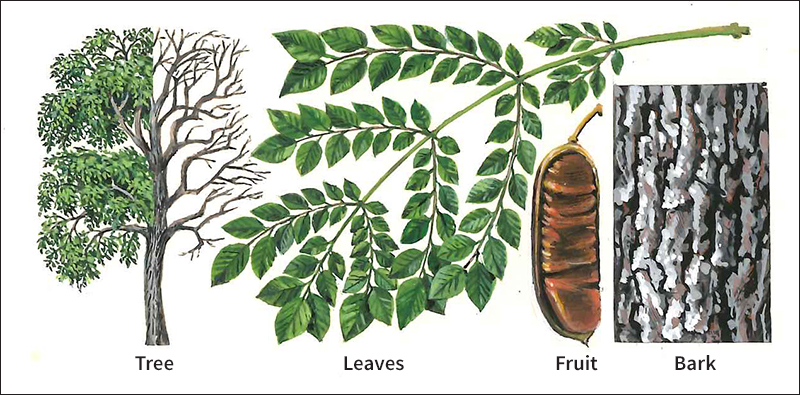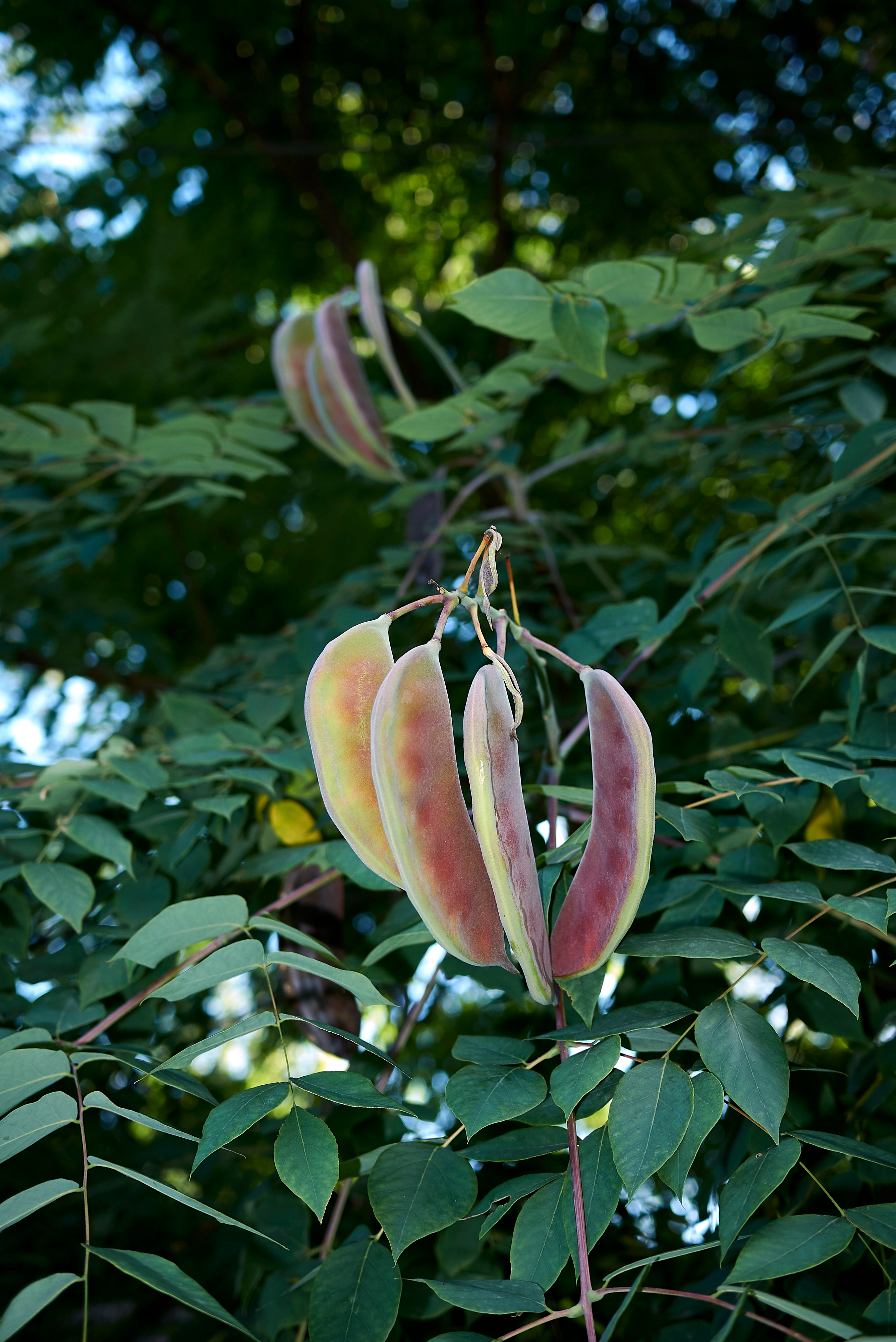Kentucky coffeetree is a broadleaf tree of eastern North America. During the 1700’s, people who had settled in Kentucky used the seeds of this tree as a substitute for coffee beans. This practice apparently gave the tree its name.

The natural range of the Kentucky coffeetree extends from central New York westward to eastern South Dakota, southward to Oklahoma, and eastward to Kentucky and Tennessee. Throughout this range, the trees exist only as scattered individuals in open woods and forests. Most grow along rivers and in cool, moist ravines.
The tree grows 50 to 100 feet (15 to 30 meters) tall. It has dark gray bark grooved with scaly ridges. Its leaves measure 2 to 3 feet (0.6 to 0.9 meter) long and 1 to 2 feet (0.3 to 0.6 meter) wide. The leaves are doubly compound—that is, each leaf consists of a main stem with several side stems. Each side stem has 6 to 14 leaflets. In most cases, the entire leaf has 30 to 60 leaflets.
The Kentucky coffeetree is one of the first trees to lose its leaves in autumn and one of the last trees to open its buds in spring. Small greenish-white flowers appear in May and June. Mature trees bear either male or female flowers. Those with female flowers produce dark brown seed pods 6 to 10 inches (15 to 25 centimeters) long. Each seed pod contains four to eight large brown seeds.

